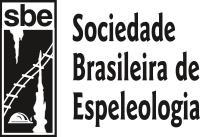O Distrito Cerâmico de Santa Gertrudes (CDSG) é o mais importante produtor de pisos e revestimentos cerâmicos do Brasil. Indústrias que produzem revestimentos cerâmicos por via seca têm pesquisado novas tecnologias para secar as matérias-primas da Formação Corumbataí (Fm). Isso se deve a um problema ambiental relacionado à emissão de poeira no ar, produzida por áreas de beneficiamento onde as matérias-primas cerâmicas foram secas. Experimentos de laboratório e testes tecnológicos, simulando os atuais processos de produção de telhas no CDSG, foram realizados no presente estudo com o objetivo de compreender melhor o papel da temperatura nas rochas argilosas de Corumbataí (Fm) e evitar perdas no atual.processo de produção. Três diferentes matérias-primas ilíticas de diferentes graus de intemperismo e compactação (dura, intermediária e macia) já utilizadas para compor o lote cerâmico foram secas à luz solar e secagem forçada a 100 ° C, 200 ° C e 300 ° C. Os resultados após a secagem forçada mostraram mudanças na morfologia da matéria-prima e na distribuição do tamanho após a moagem; também a desidratação progressiva dos minerais de argila expansíveis que têm causado a perda de plasticidade e consistência da matéria-prima e conseqüentemente afetado a qualidade do produto. Os corpos cerâmicos apresentaram valores decrescentes de retração linear, perda de resistência à flexão e fissuras horizontais em alguns corpos cujas matérias-primas foram forçadas a secar a 200 ° C e 300 ° C
The Ceramic District of Santa Gertrudes (CDSG) is the most important producer of ceramic floor and wall tiles in Brazil. Industries that produce ceramic tiles by dry route process have researched new technologies to dry the Corumbataí Formation (Fm) raw materials. It is due to environmental problem related to the dust emission in the air, produced by beneficiation areas where the raw ceramic materials have been dried. Laboratory experiment and technological test, simulating the current tile production processes in the CDSG, were performed in the present study in order to better understand the role of temperature on clayey rocks from Corumbataí (Fm) and to avoid losses in the current tile production process. Three different illitic raw materials of different degree of weathering and compactness (hard, intermediate and soft) already used to compose the ceramic batch were dried by sunlight and forced drying at 100 °C, 200 °C and 300 °C. Results after forced drying have shown changes at the raw material morphology and size distribution after grinding; also the progressive dehydration of the expandable clay minerals which have caused the plasticity and consistency loss of the raw material and consequently affected the quality of the product. Ceramic bodies presented decreasing linear shrinkage values, loss in their bending strength, and horizontal cracks in some bodies whose raw materials were forced to dry at 200 °C and 300 °C
de Almeida Azzi, Andrezza et al. Changes in technological properties and microstructure of clayey raw materials from the Corumbataí Formation upon drying: Relevance to dry route tilemaking process. Applied Clay Science, v. 157, p. 92-101. Disponível em: <http://hdl.handle.net/11449/175965>

